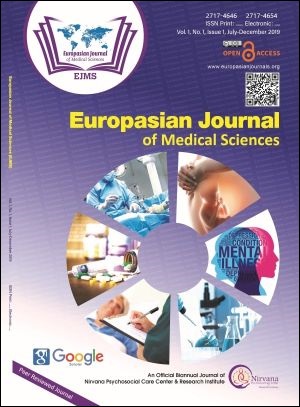COVID-19 in Nepal: Scarcity of Personal Protective Equipment (PPE) and its Alternative
Keywords:
Coronavirus, Spread, PPE, ScarcityAbstract
Background: The Coronavirus Disease (COVID-19), which was first discovered in Wuhan, China in December 2019, puts an entire world under unprecedented danger. Powerful nations such as the United States of America and European Union countries having their hardest time to get sufficient medical protective gear, ensure market operation, and eventually to save people from dying of corona infection. To date, 213 countries have been affected. WHO has confirmed 123,010 deaths and 1914,916 cases with coronavirus positive as of 15 April 2020. It has created a global public health emergency. There is no specific prophylaxis or treatment available yet. Hand washing, covering one’s mouth when coughing, social distancing, self-isolation, and quarantine are preventive measures to hamper the spread of disease. Currently, Nepal has entered into the second phase of the outbreak. Health care workers (HCW) at the frontlines of the battle against COVID-19 are ill-equipped to treat coronavirus patients, due to not having adequate personal protective equipment in Nepal. Additionally, there is a shortage of PPE in the world market due to the aggressive buying of PPE globally.
Conclusion: In this global scarcity, locally made PPE has become another alternate way for Nepal. Hence, some of the local garments, hospitals, and local rural municipalities have prepared and delivered to HCWs. Although these Nepal-made PPE are not as high quality as imported ones, they at least offer some protection to medical staff. Our recommendations are:
- Learn- from countries with the lowest mortality rate and best medical & preventive practices policies, as fast as possible.
- Alternative: Approaches are necessary to decrease the risk of exposure to HCWs and are safe for patient care in this global market scarcity of PPE.
- Solidarity- between richer and poorer countries is necessary.
- Cooperate globally international cooperation between governments, scientists, corporations and health care professionals is not only needed, but also necessary to end this pandemic.
Downloads
Downloads
Published
How to Cite
Issue
Section
License
The author(s) retain the ownership of the copyrights for their work published in EJMS without any restrictions. Upon submission, the author(s) grants EJMS a license to publish, including to display, store, copy, and reuse the published content.
License to Publish
By submitting a manuscript to EJMS, the author(s) grant the journal a non-exclusive license to:
- Publish and distribute the content in all formats, media, and platforms (both existing and future), while identifying EJMS as the original publisher.
- Reproduce, display, and store the content in both print and online formats, including institutional and digital repositories.
- Translate, adapt, and summarize the work, including reprints, extracts, and abstracts.
- Develop derivative works based on the original content.
- Include the work in electronic databases and provide links to third-party materials.
Creative Commons Licensing
In addition to EJMS’s publishing rights, authors grant third parties the right to use, share, and distribute their work under the Creative Commons Attribution 4.0 (CC BY 4.0) International License. This allows unrestricted use of the content, provided proper attribution is given to the original author(s) and the journal.

